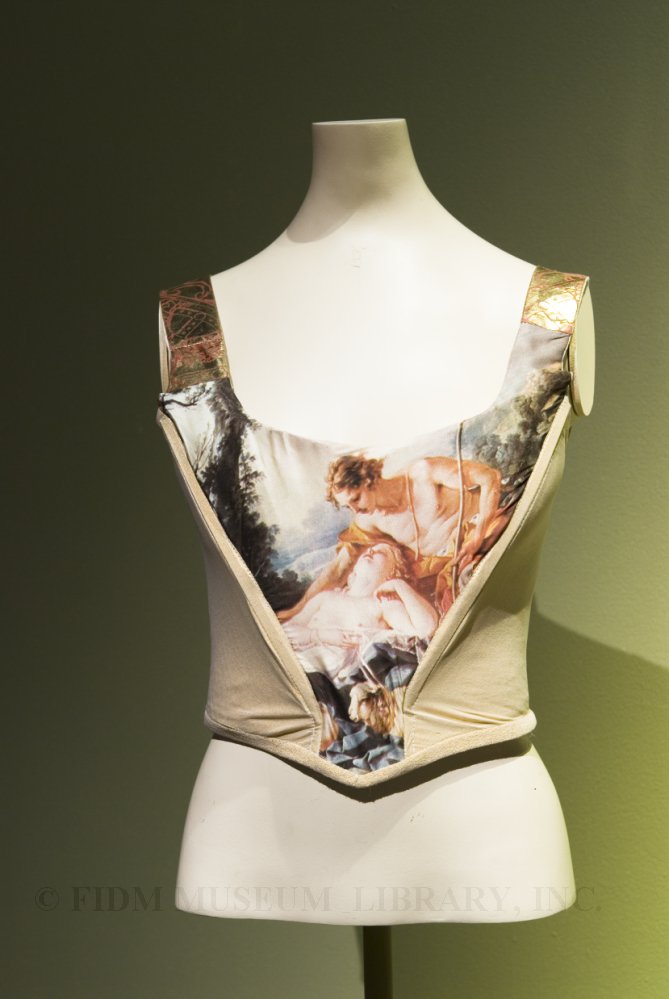Vivienne Westwood corset
The task is to form the future from the materials of the past-Vivienne Westwood1
For centuries, corsets were an essential, but unseen, part of a woman's wardrobe. Visible only through their shaping of the body, actual corsets were typically seen only in the most intimate of situations. This remained true until the 1970s, when punk fashion demonstrated that garments associated with sexuality and/or deviancy (including corsets) could be worn as everyday streetwear. In the early 1990s, corsets became a widely accepted part of the fashionable wardrobe, thanks in large part to the Jean Paul Gaultier corset worn by Madonna on her Blonde Ambition tour of 1990-91.
 Corset Vivienne Westwood Spring/Summer 1994 Museum Purchase 2003.5.12
Corset Vivienne Westwood Spring/Summer 1994 Museum Purchase 2003.5.12
Vivienne Westwood first began designing from within the punk milieu of 1970s London. You can read more about her in this earlier post. With her 1986 'Mini-Crini" collection, which explored a mini-version of the crinoline, Westwood began to demonstrate an increasing interest in revisiting and reconceptualizing historic styles. Though Westwood had explored punk versions of underwear as outerwear in her early years, in the late 1980s, Westwood began designing 18th century influenced corsets. Delicately colored and made of stretch fabric, these corsets were explicitly intended to be worn as outerwear. In the Westwood corset seen above, both the shape and the printed image are borrowed directly from the 18th century. Like its ancestor, this corset features rigid internal boning, wide shoulder straps and a V-shape at the center front. While most 18th century corsets were made of plain white cotton or linen, Westwood's version features a printed detail of the 1743 painting Daphnis and Chloe by François Boucher. You can see the entire painting here. This corset diverges from historic examples with its center back zipper--much easier to manage than historically accurate laces!
1 "The Way I See It: Vivienne Westwood, Designer." New Statesman 21 Sept. 2009: 46.